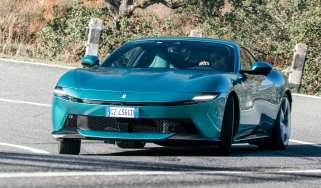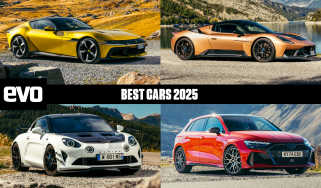‘Downsizing was nonsense. Bring back big engines, with a bit of hybrid help’
The electrification era could easily allow the return of lively, responsive, rev-hungry and musical naturally-aspirated combustion engines
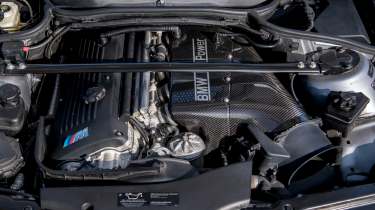
Remember ‘downsizing’? It was that industry trend that saw manufacturers cut the capacities of their combustion engines in the pursuit of reduced emissions and increased efficiency. It was also arguably the biggest blight on the perceived soul of an internal combustion engine since the introduction of the catalytic converter.
Turbochargers were the key to it all and to engineers tasked with upping power and torque while increasing efficiency and dropping emissions, they were a gift. There was no arguing with the performance. The first turbocharged BMW M3s and Mercedes-AMG C63s, for all their other faults, could stomp their naturally-aspirated predecessors in terms of both off-the-line performance and in-gear twist. The spec sheets told us fuel consumption and CO2 output were reduced enormously too, at least under strictly controlled lab testing conditions…
But what about in the real world? My long-standing ownership of cars with gratuitous swept capacities, along with the extended amount of time I spend in modern performance cars puts me in a unique position to compare and comment. Unique in the sense that I’ve done the fag packet science of counting the miles I get out of every debit card bludgeoning and kept an eye on my mpg readout.
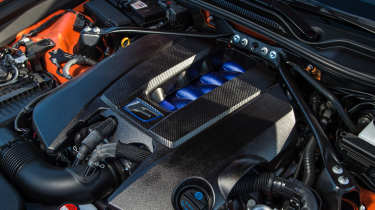
To appearances, my Lexus IS F with its 5-litre naturally-aspirated V8 can stroke along at motorway speeds sipping fuel at no greater rate than a modern turbocharged BMW M5 making the same journey. Yes, even the CS, without any of that battery weight. A flat cruise at 70mph in the near 20-year-old Lexus, with its port- and direct fuel-injection system, yields an indicated 34mpg. I also know I can get over 400 miles of cruising from full to zero on the range indicator, at which point the car will take 55L of fuel, meaning it leaves a 10L buffer in its 65L tank.
If my maths is right, that’s 33mpg on average. My experience with my 5.7-litre Vauxhall Monaro I had before the Lexus is a little fuzzier in the memory but similar. I do remember that between its 220mph sixth gear and its lazy understressed LS1 GM small block V8 engine, motorway cruises regularly indicated a difficult-to-believe 35mpg. The shock on people’s faces when I tell them in response to their generic ‘bet that drinks!’ comments at the pumps is an unlikely thrill that comes with driving big banger cars.
If you take emissions ratings as read, you have to believe that the IS and the Monaro are hideous polluters, bludgeoning baby seals to death as they trundle down the road but I have to wonder, while producing those economy figures, were they ever that bad in practice?
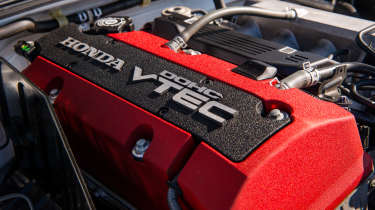
Nevermind what we didn’t quite gain with downsizing, what about what we lost? Real induction roar, layered, sinewy multi-cylinder sonic signature and synaptic throttle response made way for wheezing intakes, whoofling, farting exhausts, the odd turbo flutter and noticable lethargy when flat-footing it.
The tuning potential with turbocharging is obviously enormous if raw straight-line punch is what you want but then, there’s usually no out-gunning a warmed-over EV these days at the traffic light grand prix anyway. So even the performance benefits of downsizing and turbocharging are largely inconsequential in the modern world.
Now in the era of electrification, or at least hybridisation, we could have our cake and eat it, if the bean counters let us. Just look at the Chevrolet Corvette E-Ray, Lamborghini Revuelto and Bugatti Tourbillon. All retain, or are returning to, effervescent multi-cylinder naturally-aspirated engines. Their performance is improved and their overall emissions reduced with the assistance of batteries and motors - turbochargers are not needed for full-bodied power bands.
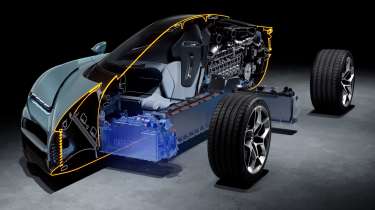
Turbos aren’t needed for low CO2 either. On top of the obvious emissions benefits of plug-in hybridisation, Cosworth is outspoken in its confidence that its internal combustion engine developments will keep petrol power emissions compliant for the foreseeable.
The British firm is actually producing Bugatti’s all-new, 9000rpm, 8.3-litre naturally-aspirated V16 heart – an engine by the way that's 252kg lighter than the old quad-turbo W16. Speaking of which, yes, the same Bugatti that largely heralded the turbocharging revolution all the way back in 2005 with the mighty Veyron. Short of the plan VW execs had for it, which was essentially to be a Rimac Nevera in a French suit, the Tourbillon is to be a roaring, cocophanous internal combustion hypercar of the old school, with thoroughly contemporary efficiency and performance capability – there are no losers.
God, what a world it’d be if the kind of wonderful tech and engineering and the renaissance of internal combustion personality we see in boutique hypercars, flagship Lamborghinis and Bugattis were allowed to trickle down. Far from being the villains, batteries and motors could be the saviour of emotive, multi-cylinder combustion engines as we once knew and loved them. We’d fall in love with performance cars again and I’d be able to advance my aspirations for car ownership beyond a 7-litre Corvette from 2005…



